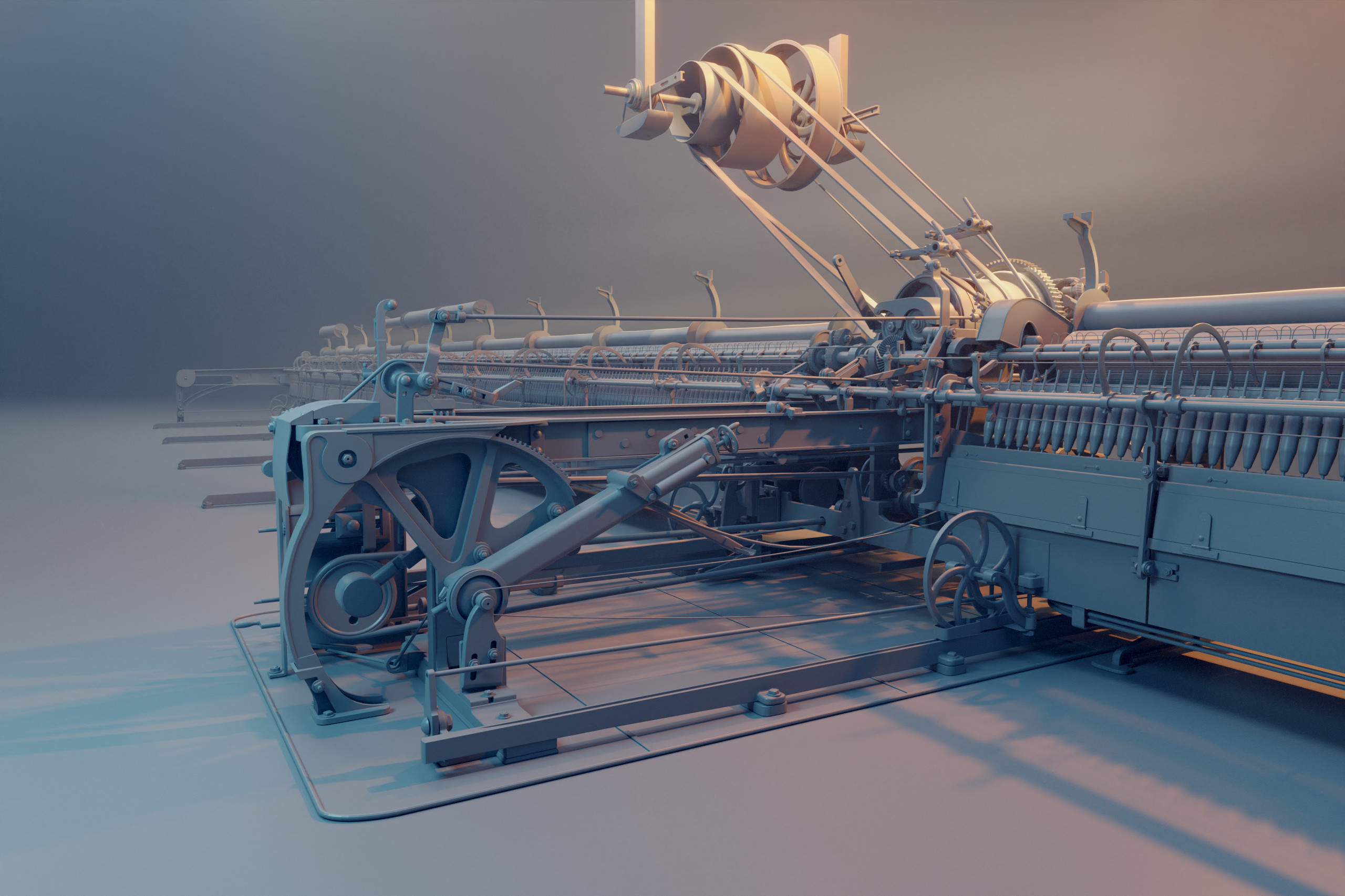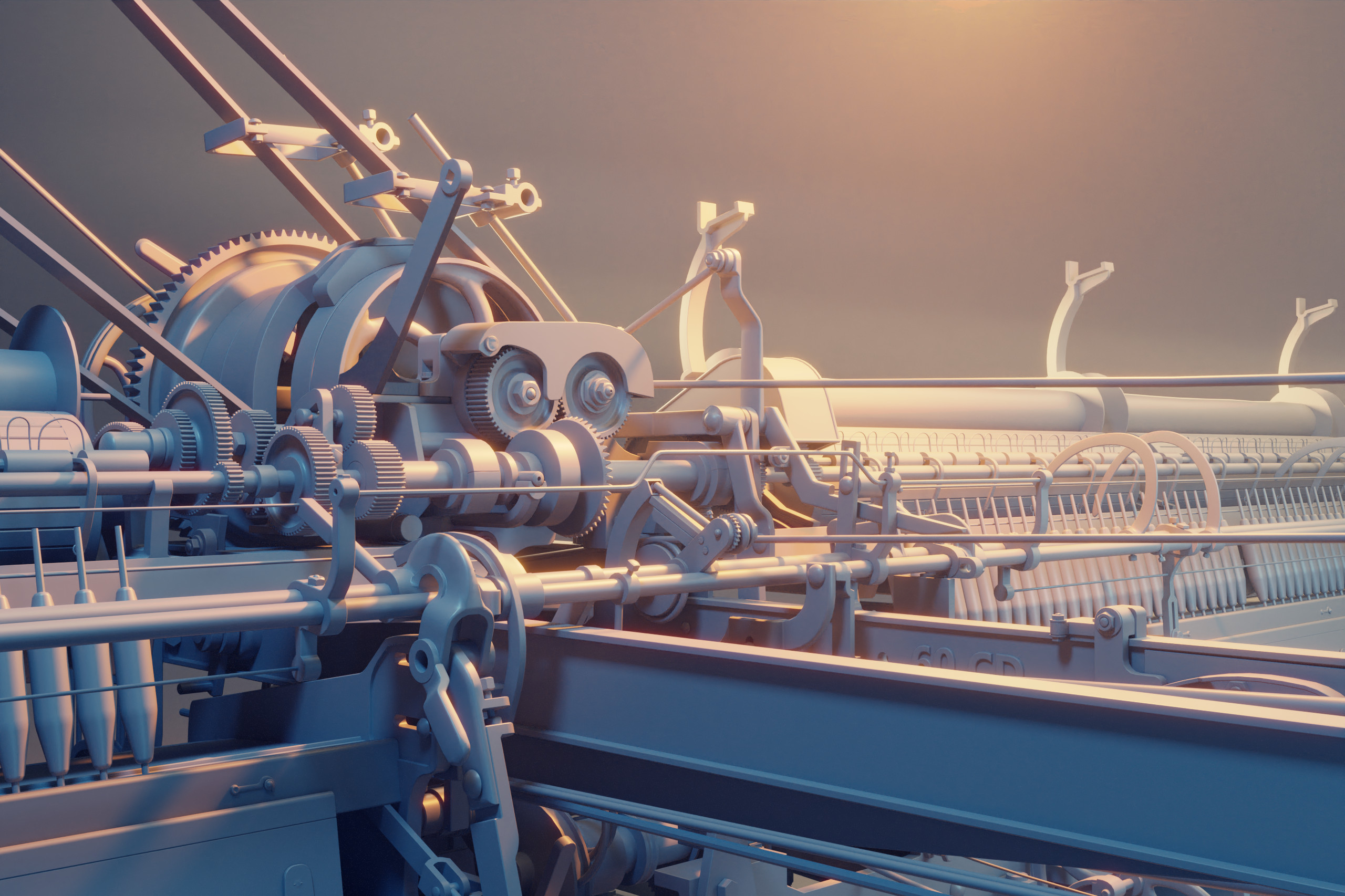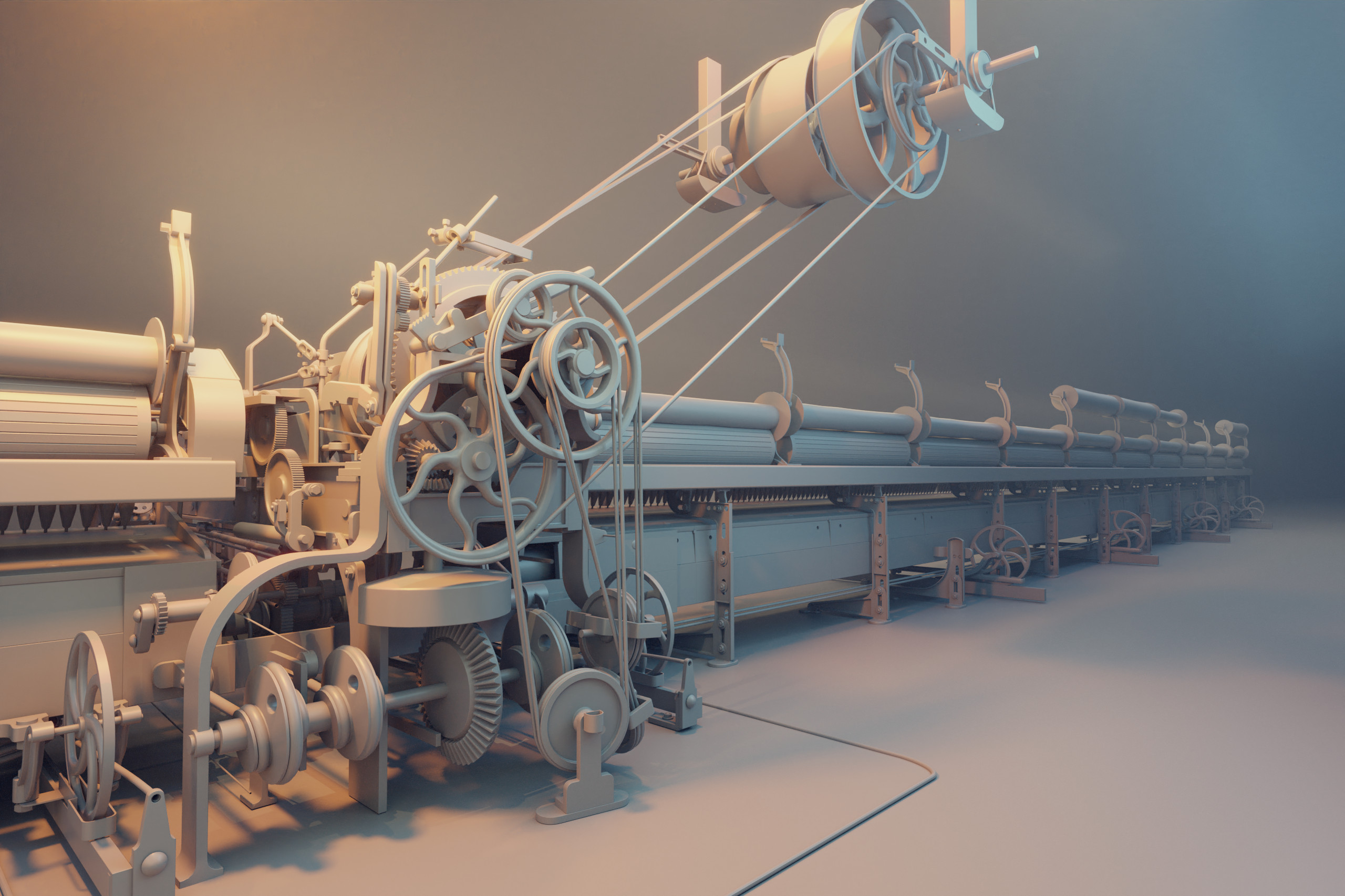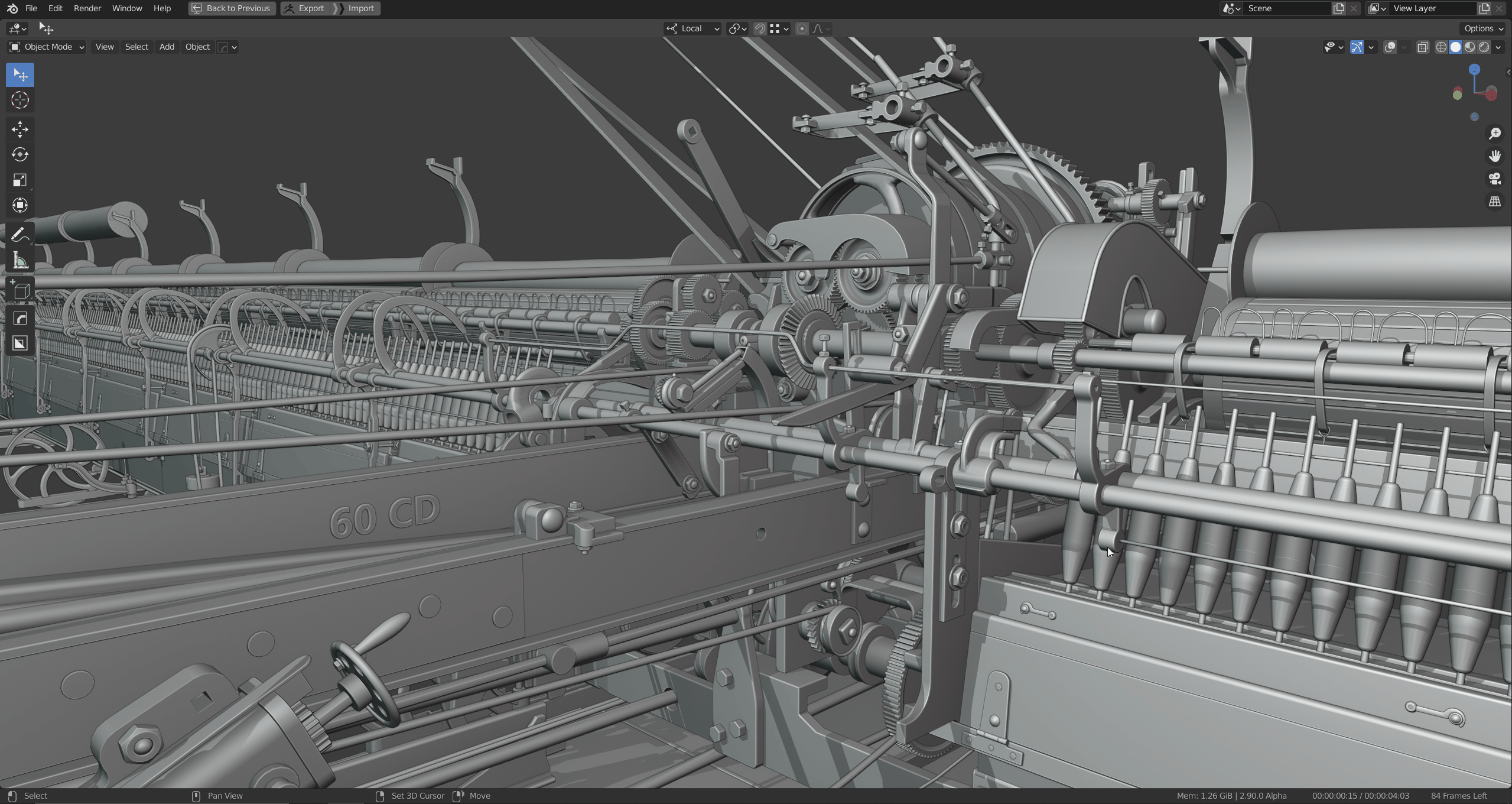Cotton Spinning Mule
Cotton Spinning Mule
This is a personal project.
The machine here is a traditional self-acting spinning mule as they were used from the Industrial Revolution to the mid-1900s. I first got interested in the period by playing Assassin's Creed Syndicate. After doing some research on the period I found this amazing, complex, and unique machine I had never seen before. This triggered the creator in me.
In my previous job, I modeled a lot of real-world laboratory machines. They were usually very new, clean, and we had hundreds of pictures from every angle. This time, I had only limited information. All was publicly available on the internet. I saw this as an opportunity not only to demonstrate the skills I had acquired so far but also to revive a part of history of human ingenuity in a time of huge social changes. I spent a huge amount of time searching for information and clues to create an authentic representation.
The asset uses a mid-poly workflow with weighted normal. I decided to be more detailed, use more polygons than I would do in production. You should be able to get close and see all the bolts and nuts. The gears should not feel gamy and have proper proportions. Still, it was important for me to use the same techniques I would for real production.
The current triangle count is at around 350,000 but it could be reduced to fit production requirements with some additional effort. This could be done by decreasing the level of detail in more hidden areas, baking certain parts down to 2d planes (e.g., the small wires on the side panels of the machine), optimizing the bolts, gears, and wheels as well as by replacing some of the details like texts with decals.
If you are further interested in the process of creating this asset, check out my blog. I share some additional information there. Amongst other things, I describe how I utilized image planes, collection instancing, weighted normals and modifiers: https://www.artstation.com/matthias-patscheider/blog






